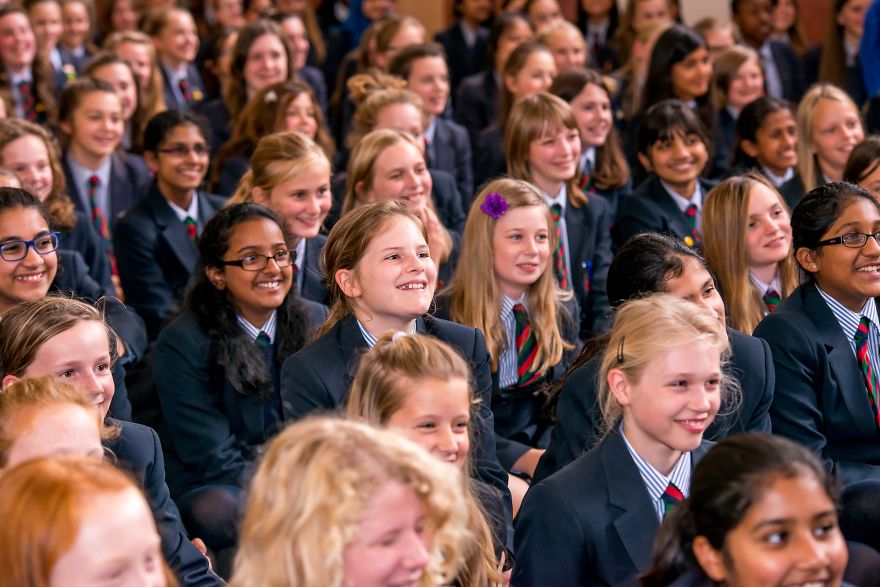Rape Is A Weapon Of War – And Of Gang Conflict
156views
Marcia’s brother and her boyfriend were gang members. Over the two hours that I interviewed her in 2009, she told me that rape had been used as “a weapon” between street gangs. When she was 16 years old, Marcia was grabbed off the street and raped in a park by men to whom her brother owed a drugs debt; he was in prison at the time. The attack “punished” Marcia’s brother – they were both the target. Marcia chose to use the word “weapon” and it wasn’t the first time I’d heard a young person use this language.
Girls living in gang-affected neighbourhoods had already articulated that rape was the only “weapon” that couldn’t be stopped and searched for, and that the focus on knives and guns was failing to afford them the protection that they needed; it was their insight that drove me to develop a three-year research project into the impact of gang violence on women and girls.
More recently, two significant changes have shifted the policy landscape. Last year, the government acknowledged the use of sexual violence in and between street gangs in the UK, by committing £1.2m to fund 13 specialist advocacy services to start to address the issue. And this month, the G8 committed $35m (£22.7m) to tackle the use of rape as a weapon of war.
And yet the dots between these two policy initiatives are yet to be joined. There remains a gulf between how rape in gang conflict and rape in war are conceptualised and addressed. Both are often motivated by territorial conflict between groups. Women and girls who are raped in this context rarely seek help and support, or have their victimisation recognised by professionals. The fear of retribution, and the wider context of neighbourhood violence within which such sexual assaults take place, should not be underestimated.
When I attended the Commission on the Status of Women at the United Nations this year, it was evident that the UK response to the impact of gang violence on women and girls was unique and progressive on the global stage. Few countries have recognised the issue at policy level, or committed government funds to address the problem.
However, even in the UK many professionals still require training to identify cases, and the investigation of gang-associated rape is rare. Simultaneously, the G8 agreement is seeking to plug some of these gaps. The declaration signed this month commits the G8 to develop a new protocol to investigate rape in conflict, offers training for the military, and commits support for prosecutions in some of the countries that are worst affected.
Surely we should be embarking on a two-way knowledge exchange: first, ensuring that the learning from the work on rape in war is used to improve the way professionals respond to and investigate the rape of gang-associated women and girls in the UK; second, using this G8 commitment to ensure global policy recognition of rape in gang conflict, in addition to war zones.
The current momentum in policy presents us with a unique opportunity – to address the use of rape as a weapon in both gang conflict and war. The fact that young people around the country have used the word weapon to describe their experiences of rape needs to be addressed.
(2013)
Marcia’s brother and her boyfriend were gang members. Over the two hours that I interviewed her in 2009, she told me that rape had been used as “a weapon” between street gangs. When she was 16 years old, Marcia was grabbed off the street and raped in a park by men to whom her brother owed a drugs debt; he was in prison at the time. The attack “punished” Marcia’s brother – they were both the target. Marcia chose to use the word “weapon” and it wasn’t the first time I’d heard a young person use this language.
Girls living in gang-affected neighbourhoods had already articulated that rape was the only “weapon” that couldn’t be stopped and searched for, and that the focus on knives and guns was failing to afford them the protection that they needed; it was their insight that drove me to develop a three-year research project into the impact of gang violence on women and girls.
More recently, two significant changes have shifted the policy landscape. Last year, the government acknowledged the use of sexual violence in and between street gangs in the UK, by committing £1.2m to fund 13 specialist advocacy services to start to address the issue. And this month, the G8 committed $35m (£22.7m) to tackle the use of rape as a weapon of war.
And yet the dots between these two policy initiatives are yet to be joined. There remains a gulf between how rape in gang conflict and rape in war are conceptualised and addressed. Both are often motivated by territorial conflict between groups. Women and girls who are raped in this context rarely seek help and support, or have their victimisation recognised by professionals. The fear of retribution, and the wider context of neighbourhood violence within which such sexual assaults take place, should not be underestimated.
When I attended the Commission on the Status of Women at the United Nations this year, it was evident that the UK response to the impact of gang violence on women and girls was unique and progressive on the global stage. Few countries have recognised the issue at policy level, or committed government funds to address the problem.
However, even in the UK many professionals still require training to identify cases, and the investigation of gang-associated rape is rare. Simultaneously, the G8 agreement is seeking to plug some of these gaps. The declaration signed this month commits the G8 to develop a new protocol to investigate rape in conflict, offers training for the military, and commits support for prosecutions in some of the countries that are worst affected.
Surely we should be embarking on a two-way knowledge exchange: first, ensuring that the learning from the work on rape in war is used to improve the way professionals respond to and investigate the rape of gang-associated women and girls in the UK; second, using this G8 commitment to ensure global policy recognition of rape in gang conflict, in addition to war zones.
The current momentum in policy presents us with a unique opportunity – to address the use of rape as a weapon in both gang conflict and war. The fact that young people around the country have used the word weapon to describe their experiences of rape needs to be addressed.
(2013)
156views
Share on Facebook



4
2